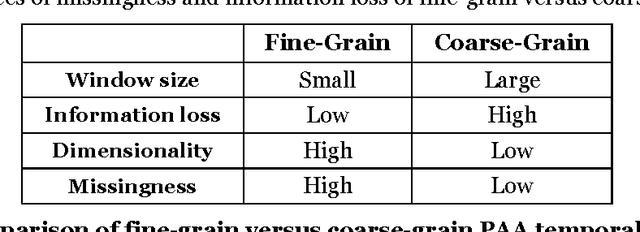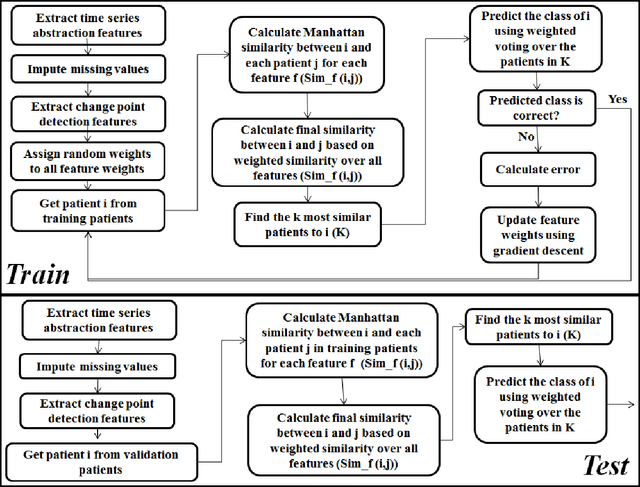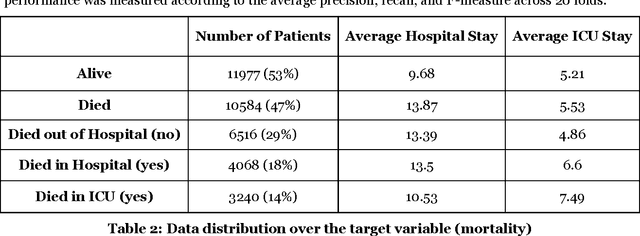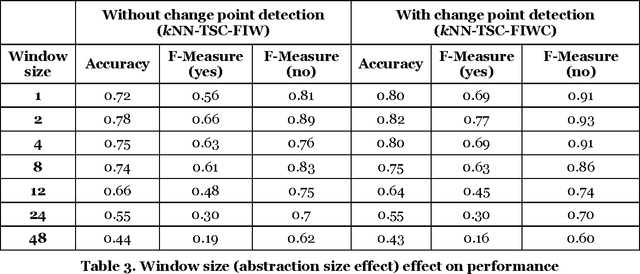Leveraging Patient Similarity and Time Series Data in Healthcare Predictive Models
Paper and Code
Apr 30, 2017



Patient time series classification faces challenges in high degrees of dimensionality and missingness. In light of patient similarity theory, this study explores effective temporal feature engineering and reduction, missing value imputation, and change point detection methods that can afford similarity-based classification models with desirable accuracy enhancement. We select a piecewise aggregation approximation method to extract fine-grain temporal features and propose a minimalist method to impute missing values in temporal features. For dimensionality reduction, we adopt a gradient descent search method for feature weight assignment. We propose new patient status and directional change definitions based on medical knowledge or clinical guidelines about the value ranges for different patient status levels, and develop a method to detect change points indicating positive or negative patient status changes. We evaluate the effectiveness of the proposed methods in the context of early Intensive Care Unit mortality prediction. The evaluation results show that the k-Nearest Neighbor algorithm that incorporates methods we select and propose significantly outperform the relevant benchmarks for early ICU mortality prediction. This study makes contributions to time series classification and early ICU mortality prediction via identifying and enhancing temporal feature engineering and reduction methods for similarity-based time series classification.
 Add to Chrome
Add to Chrome Add to Firefox
Add to Firefox Add to Edge
Add to Edge